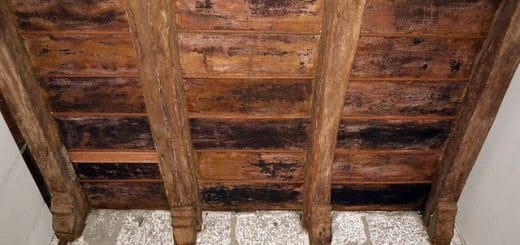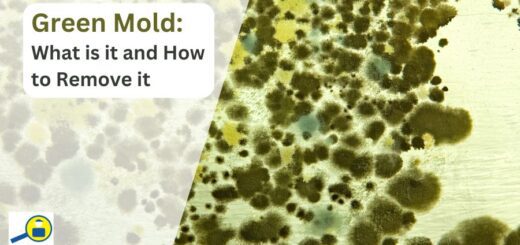Easy Ways to Get Rid of Bathroom Mold
Bathrooms are an ideal place for moldMold is a type of fungus that grows in damp or humid conditi... More to grow, as the humidityHumidity is the amount of moisture or water vapor present in... More creates the perfect conditions for it to form. MoldMold is a type of fungus that grows in damp or humid conditi... More can be tough to get rid of and it can cause illness for you and your loved ones if you are exposed to it for a long time. This is why it is important to remove any moldMold is a type of fungus that grows in damp or humid conditi... More right away and ensure it does not come back.
If you’ve encountered moldMold is a type of fungus that grows in damp or humid conditi... More in your bathroom, it is crucially important to address it right away. Reacting as soon as you see signs of moldMold is a type of fungus that grows in damp or humid conditi... More will help prevent it from developing further. Aside from eliminating the mold, you also need to figure out the source of the moisture that caused the moldMold is a type of fungus that grows in damp or humid conditi... More and stop it as well so that the moldMold is a type of fungus that grows in damp or humid conditi... More does not return. Usually, you can remove moldMold is a type of fungus that grows in damp or humid conditi... More from a small surface using bleach, borax, vinegar, ammonia, hydrogen peroxide, detergent, baking soda, tea tree oil, or grapefruit extract. However, if the area affected by moldMold is a type of fungus that grows in damp or humid conditi... More is larger than 10 square feet, you should call a professional to remediate the moldMold is a type of fungus that grows in damp or humid conditi... More.
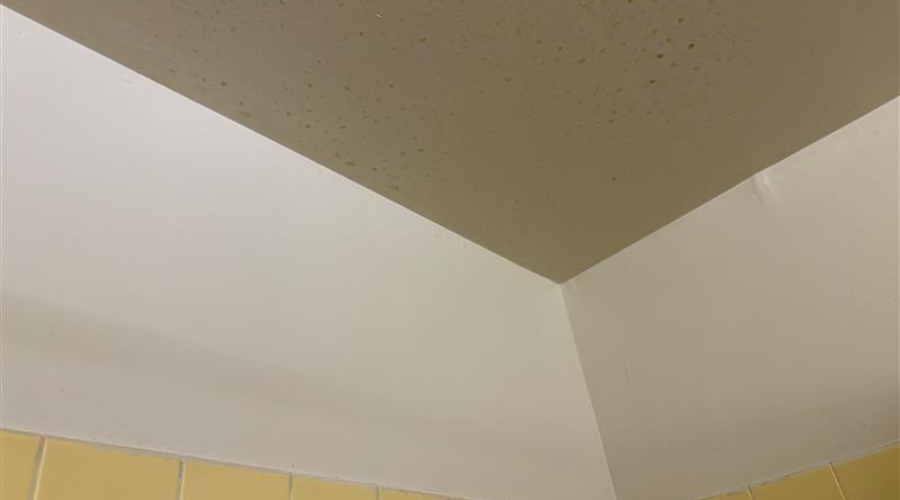
How to Remove Black Mold from Bathroom
Here are the specifics of what you need to do to remove moldMold is a type of fungus that grows in damp or humid conditi... More using different methods. This will ensure that it is fully removed from the surface.
- Bleach
Bleach is a great way to remove indoor mold spores, sanitize the area, and prevent future moldMold is a type of fungus that grows in damp or humid conditi... More growth. It is best used on nonporous surfaces like tiles, bathtubs, glass, and countertops. Bleach should not be used on porousPorous describes a material that contains small openings or ... More surfaces like wood or drywall as it cannot remove moldMold is a type of fungus that grows in damp or humid conditi... More from these materials. Another thing to keep in mind is that bleach is a corrosive chemical that can damage materials that it is used on. It also releases harmful fumes and toxic gases. To remove moldMold is a type of fungus that grows in damp or humid conditi... More using bleach, you will need to mix 1 cup of bleach per gallon of water and apply the solutionA solution is a homogeneous mixture of two or more substance... More to non-porous materials and surfaces with moldMold is a type of fungus that grows in damp or humid conditi... More growth. This will allow you to remove all moldMold is a type of fungus that grows in damp or humid conditi... More growth.
- Borax
Using Borax is a more natural way to remove moldMold is a type of fungus that grows in damp or humid conditi... More from your bathroom. To use it effectively, you will need to combine one cup of Borax per one gallon of water. During the cleaning process, make sure to vacuum loose moldMold is a type of fungus that grows in damp or humid conditi... More with a HEPA filtered vacuum cleaner. Then, use a scrub brush and the borax solutionA solution is a homogeneous mixture of two or more substance... More to scrub the moldMold is a type of fungus that grows in damp or humid conditi... More off the surface. Make sure to wipe away any leftover moisture and moldMold is a type of fungus that grows in damp or humid conditi... More particles so they do not end up in the air. There is no need to rinse off the borax solutionA solution is a homogeneous mixture of two or more substance... More, just leave it to dry.
- Vinegar
Using vinegar is another natural and safe way to kill moldMold is a type of fungus that grows in damp or humid conditi... More. Vinegar also does not give off dangerous fumes like bleach does. All you will need to do is to spray it on the surface and leave it. Repeat every few days and you will keep the surface moldMold is a type of fungus that grows in damp or humid conditi... More free. There is no need to water down the vinegar. After you’ve sprayed the vinegar, you should leave it to dry.
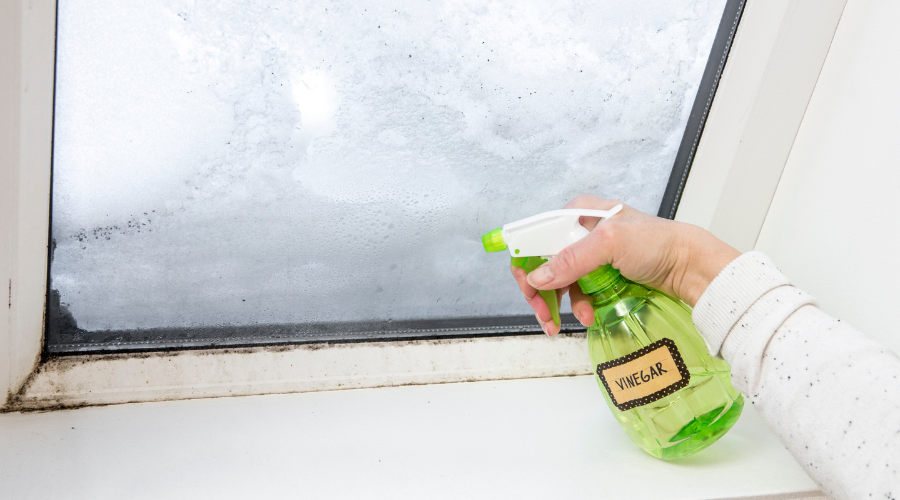
- Ammonia
Ammonia kills mold on hard non-porous surfaces including countertops, glass, or tiles. However, it is not effective for killing moldMold is a type of fungus that grows in damp or humid conditi... More on porousPorous describes a material that contains small openings or ... More surfaces like wood or drywall. Keep in mind that ammonia is a harsh, toxic chemical. As it does kill surface moldMold is a type of fungus that grows in damp or humid conditi... More, you should still make sure to remove any leftover dead moldMold is a type of fungus that grows in damp or humid conditi... More and moldMold is a type of fungus that grows in damp or humid conditi... More sporesSpores are microscopic reproductive units of fungi or mold t... More. It is best to create a solutionA solution is a homogeneous mixture of two or more substance... More of 50% clear ammonia and 50% water in a spray bottle, spray the solutionA solution is a homogeneous mixture of two or more substance... More on any moldy areas and leave the area alone for a few hours before you wipe or rinse it.
- Hydrogen peroxide
This is a great way to kill moldMold is a type of fungus that grows in damp or humid conditi... More as this method does not damage the environment and it does not remove toxic residueResidue is any leftover material, such as soot, dust, or che... More or produce toxic fumes. It is effective at killing moldMold is a type of fungus that grows in damp or humid conditi... More on floors, bathroom fixtures, walls, and even kitchen appliances. You can just take 3% hydrogen peroxide and put it in a spray bottle. Then spray any moldy surfaces and let it sit for 10 minutes. Next, scrub the area so that all moldMold is a type of fungus that grows in damp or humid conditi... More gets removed and wipe the area down so that all residual moldMold is a type of fungus that grows in damp or humid conditi... More and sporesSpores are microscopic reproductive units of fungi or mold t... More get removed.
- Detergent and water
This is a great way to remove mold from non-porous surfaces.
- Baking soda
This is a safe cleaner for killing moldMold is a type of fungus that grows in damp or humid conditi... More. You can also use baking soda and vinegar together as they kill different species of moldMold is a type of fungus that grows in damp or humid conditi... More. Just add one quarter of a tablespoon of baking soda into a spray bottle of water, shake it so that it dissolves the baking soda, spray the moldy area, use a spongeA sponge is a porous material used to absorb liquids or clea... More or brush to remove all moldMold is a type of fungus that grows in damp or humid conditi... More from the surface, and then rinse with water. Finally, spray the area again and let it air dry.
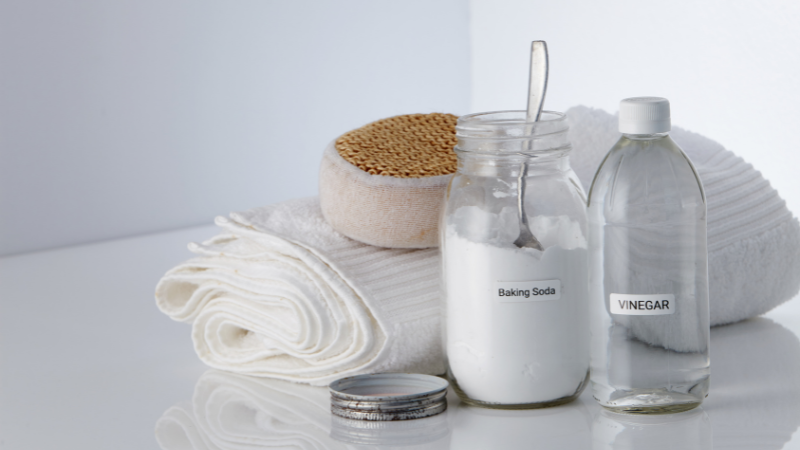
- Tea Tree Oil
This is a great natural option for killing moldMold is a type of fungus that grows in damp or humid conditi... More. Tea tree oil is antifungal and can kill all types of moldMold is a type of fungus that grows in damp or humid conditi... More. You should, however, make sure that the tea tree oil that you purchase is made of Melaleuca Alternifolia so that it works. Just add tea tree oil and water to a spray bottle. The ratio should be 1 teaspoon of tea tree oil for each cup of water. Next, spray the solutionA solution is a homogeneous mixture of two or more substance... More onto the moldy surface. Make sure not to rinse the solutionA solution is a homogeneous mixture of two or more substance... More.
- Grapefruit Seed Extract
Another way to kill moldMold is a type of fungus that grows in damp or humid conditi... More effectively is grapefruit seed oil. You can purchase it from many health food stores. The citric acid in it helps attack the moldMold is a type of fungus that grows in damp or humid conditi... More and also disinfects and deodorizes. Make sure to mix a ratio of 10 drops of grapefruit seed extract per cup of water. Then, shake the spray bottle and spray it on the surface where you see moldMold is a type of fungus that grows in damp or humid conditi... More growing. Next, rinse the solutionA solution is a homogeneous mixture of two or more substance... More. The longer the grapefruit extract is in contact with moldMold is a type of fungus that grows in damp or humid conditi... More the more it will cut through it and prevent it from returning. Repeat the process as needed.
Preventing Mold in Your Bathroom
It is always best to try and keep mold away from your bathroom. There are some preventative measures you can take so that you do not end up with moldMold is a type of fungus that grows in damp or humid conditi... More. Here are a few:
- Keep the bathroom clean and dry. This includes the shower, tub, toilet, sink and tile. You should also always use a mildew-resistant cleaner on your tile and grout.
- If you have leaks in your bathroom, make sure to fix them. Whether it is leaky shower, toilet, or sink, it can cause moldMold is a type of fungus that grows in damp or humid conditi... More to grow.
- Increase ventilationVentilation is the process of exchanging or circulating air ... More in your bathroom to help ensure moldMold is a type of fungus that grows in damp or humid conditi... More does not grow. Your bathroom should always be well-ventilated. You can improve the ventilationVentilation is the process of exchanging or circulating air ... More by running an exhaust fan during and after showers or opening a window if you have one.
- Use mold-resistant products to prevent moldMold is a type of fungus that grows in damp or humid conditi... More. If you are able, when remodeling a bathroom, choose materials that are moldMold is a type of fungus that grows in damp or humid conditi... More resistant, including tile, grout, paint, and caulk.
- Clean up any spills right away. If you spill something on the floor, make sure to wipe it off right away.
- Any areas that get wet in the bathroom should be dried immediately. This means that after a shower, bathing, or washing the floor, you should dry these areas right away. You can use a mop or a towel to do so.
- Keep proper humidityHumidity is the amount of moisture or water vapor present in... More levels in your home. Your bathroom should be at a humidityHumidity is the amount of moisture or water vapor present in... More level of 30-50% so you can prevent moldMold is a type of fungus that grows in damp or humid conditi... More.
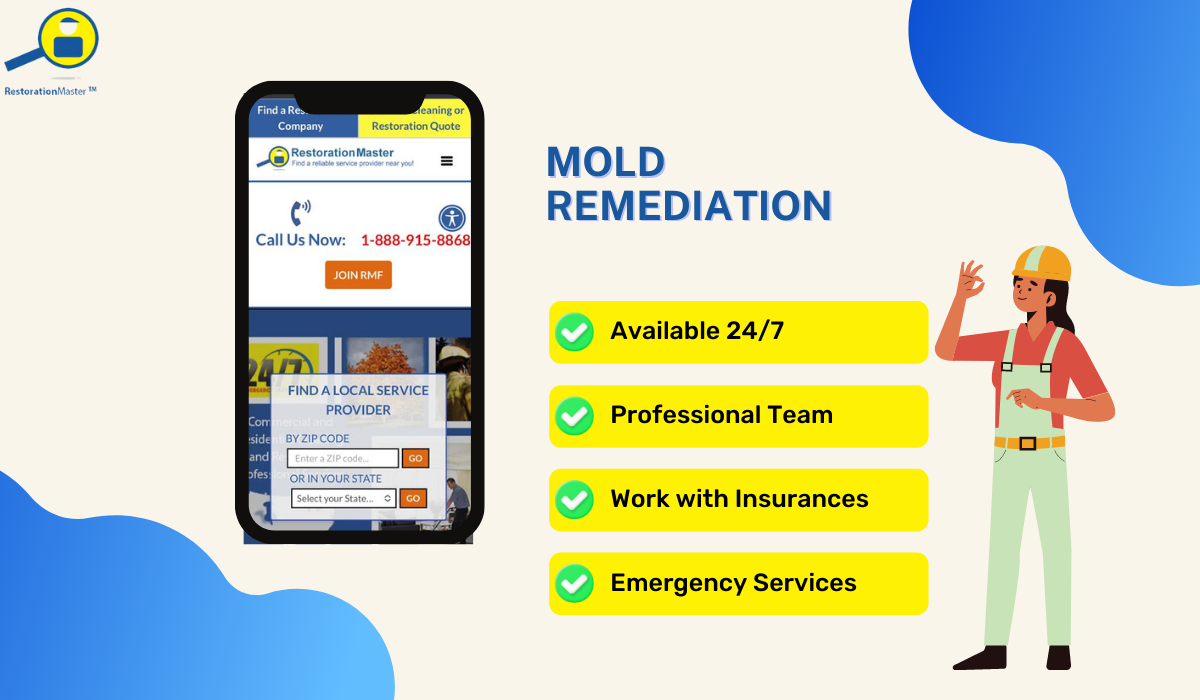
If you’ve encountered bathroom moldMold is a type of fungus that grows in damp or humid conditi... More, call a mold remediation professional to help. These professionals specialize in moldMold is a type of fungus that grows in damp or humid conditi... More removal with the proper tools and equipment to remove moldMold is a type of fungus that grows in damp or humid conditi... More from your home or business and ensure it does not return. MoldMold is a type of fungus that grows in damp or humid conditi... More removal technicians will find the source of moldMold is a type of fungus that grows in damp or humid conditi... More, remove it, and restore your property back to its original state. Most cases of moldMold is a type of fungus that grows in damp or humid conditi... More removal should be left to the professionals.










